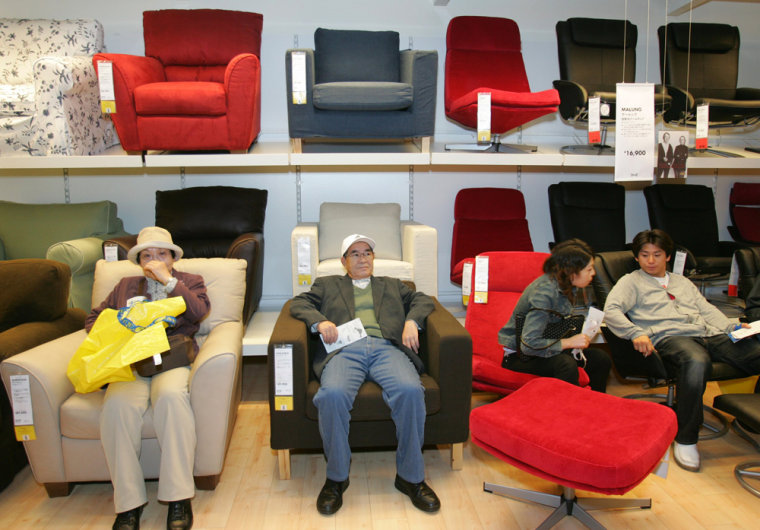Crowds of shoppers greeted the opening of an IKEA megastore outside Tokyo Monday, marking a promising start for the furnishings retailer two decades after its first abortive foray into Japan's notoriously fickle market.
The new trademark blue-and-yellow megastore just east of Tokyo is one of IKEA's biggest in Asia, along with its Beijing store opened earlier this month. The Funabashi store was so packed that guards struggled to control crowds at the store's entrance, and hour-long queues formed at cash registers.
"I just can't believe how cheap everything is," gushed Asami Miyahara, a 29-year-old housewife who brought her two nursery-aged children, her sister and parents from central Tokyo for the opening. She was maneuvering a cartload of kitchen items through the crowded store.
More than 35,000 customers shopped there on Monday, Japanese unit IKEA Japan K.K. announced late Monday.
The Swedish retailer — which has over 230 stores across 34 countries and raked in global sales of 14.8 billion euro ($18.3 billion) last year — says it has done its homework since its unsuccessful 1974-1986 stint in Japan, when consumers didn't embrace the concept of do-it-yourself assembling.
"We weren't yet ready for Japan. We didn't know enough about the market," Anders Dahlvig, CEO of the IKEA Group told reporters Monday. But before its second attempt, IKEA studied hundreds of Japanese homes to get a sense of consumer tastes and needs, he said.
"In fact, we're confident we can expand the home furnishing market in Japan," Dahlvig said. "We hope to satisfy needs and possibilities people haven't seen before."
On display at the company's sprawling store, featuring nearly 40,000 square meters of show rooms and a large restaurant, are 70 room sets with thousands of products to show how they can fit into cramped Japanese apartments and houses.
Of the more than 10,000 products sold by IKEA around the world, about 7,500 are offered in Japan. Large sofas, beds and tables — popular in Europe and North America — have been scrapped because they would not fit into Japanese homes.
To further cater to Japan's consumers, accustomed to lavishly high levels of customer service, IKEA is also making it easier for customers to get home delivery, and is offering additional service to help assemble the furniture.
And the prices — 2,500 yen ($21.50) for a square side table, 50 yen ($0.43) for a mug — undercut popular Japanese competitors like the MUJI, the "no-brand" brand by Ryohin Keikaku Co.
Still, other global retailers have struggled in Japan. France's Carrefour SA, the world's No. 2 retailer after Wal-Mart, pulled out of the country last year after failing to keep up with trends among Japan's fickle consumers.
Wal-Mart itself has seen faltering sales at its Japanese subsidiary, Seiyu Ltd.
But IKEA doesn't seem worried — plans are already in the works for a second store west of Tokyo, and the retailer has said it hopes there will be eight to 12 IKEA outlets in Japan in five years.
Shoppers say they can't wait.
"I knew there was a store opening closer to us soon, but I wanted to come today," said Iyoko Iju, a 47-year-old housewife from west Tokyo, who was at the store with her mother.
"The kitchen sets even had Japanese-style fish grills. I was amazed!" she added, saying her 90-minute train ride to the store had been well worth it.
Iju had one complaint, however.
"The store is a little too huge. My mother kept on getting lost. We had to find each other using our cell phones," she said.
